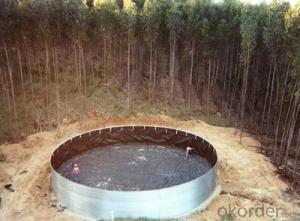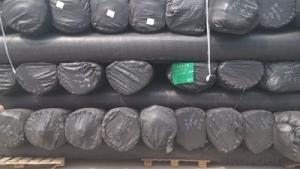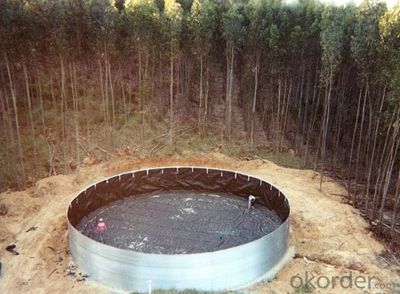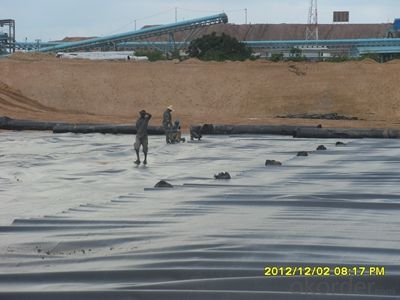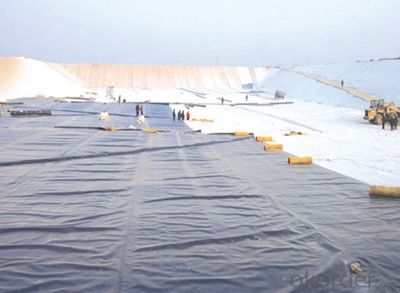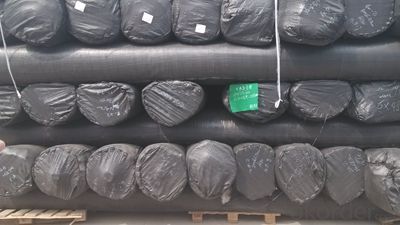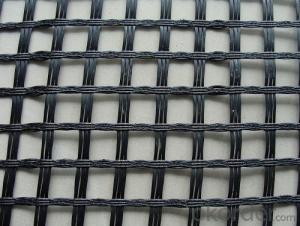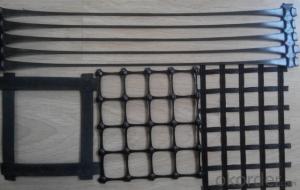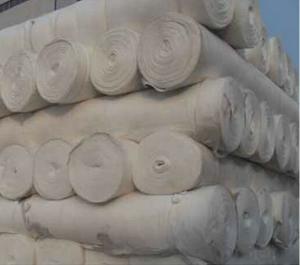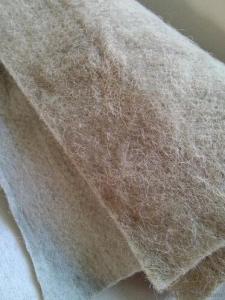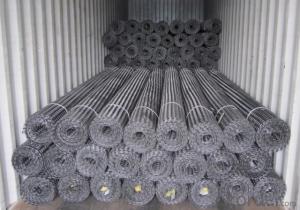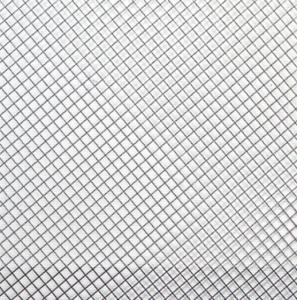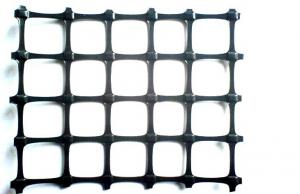EVA/ECB/PE Geomembrane Used in Railway Tunnel
- Loading Port:
- Tianjin
- Payment Terms:
- TT OR LC
- Min Order Qty:
- 88 m²
- Supply Capability:
- 1800000 m²/month
OKorder Service Pledge
OKorder Financial Service
You Might Also Like
Introduction of CNBM
China National Building Materials (Group) Corporation (CNBM) is a state-owned enterprise in charge of administrative affairs in China building materials industry. Established in 1984, CNBM is a large group corporation of building materials with total assets of RMB 25 billion and a total staff of 30,000. Now CNBM owns more than 200 subsidiaries in and abroad the country, including wholly-owned corporations and joint ventures.
FAQ of geosynthetics :
What is geosynthetics ?
Geosynthetics form a perfect erosion control fabric used extremely widely in civil engineering to stabilize and reinforce slopes and soil under or next to roads, railways, dams, water reservoirs etc.. They can be easily applied which minimizes the time of construction, as well as they limit the resources and materials necessary.
What kinds of geosynthetics we have ?
Non-woven geotextile, geogrids, geocells, GCL, Geomembranes, Geonets, Geocomposites etc .
What is the geosynthetics used for ?
Hydraulic
Lagooning and Water Treatment, Ornamental Ponds, Golf Courses
Aquaculture and Desalination,Water Lagoons,Tanks, Reservoirs, Liquid Waste,Floating Cover Solutions, Drainage and Filtration
Environment
Tailing ponds, Leach mining,Landfills,Landfill Capping,Protection against corrosion,Vertical Barriers
Civil Works
Erosion Control,Secondary Containment,Tunnels,Linear and Surface Works,Consolidation of Margins,Soil Reinforcement,Soil Separation.
Building - Parkings,Roofing,Soundproofing
The structure of LDPE Geomembrane series description:
GEOMEMBRANE is a smooth high density proethylene(HDPE) geomembrane manufactured with the highest quality flexible geomembranes This product is used in applications that require excellent chemical resisitance and endurance properties.
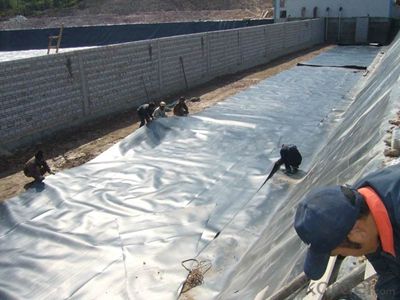
Discription of EVA/Ecb/PE Geomembrane Used in Railway Tunnel
Made from virgin resin by extrude technology
Specification of EVA/Ecb/PE Geomembrane Used in Railway Tunnel:
Thickness ranges from l. 5mm t0 3. Omm, width from 2m t0 4m, roll length could be made accord
Ing to design or client' s request.
Features or Property of EVA/Ecb/PE Geomembrane Used in Railway Tunnel:
I. Good flexibility
2. Excellent in waterproofing and separation, easy for construction
3. Resist to chemical erosion, high climate bearing ability
Application of EVA/Ecb/PE Geomembrane Used in Railway Tunnel:
I. Subway tunnel waterproofing projects
2. Tunnel waterproofing projects
3. Basement and roofing waterproofing
Production standard of EVA/Ecb/PE Geomembrane Used in Railway Tunnel:
First PA rt of tunnel wate RP roofing material technical requests
Area | Application of Geosynthetics |
Hydraulic | Lagooning and Water Treatment, Ornamental Ponds, Golf Courses Aquaculture and Desalination Water LagoonsTanks, Reservoirs, Liquid WasteFloating Cover SolutionsDrainage and FiltrationShading Cover Solutions |
Environment | Tailing ponds, Leach mining,Landfills,Landfill Capping,Protection against corrosion,Vertical Barriers |
Civil Works | Erosion Control, Secondary Containment, Tunnels,Linear and Surface Works,Consolidation of Margins,Soil Reinforcement,Soil Separation. |
Building | Parkings,Roofing,Soundproofing building |
- Q:How do geogrids enhance the stability of steep railway embankments?
- Geogrids enhance the stability of steep railway embankments by providing reinforcement and preventing soil erosion. They are placed within the soil layers, creating a strong interlocking system that distributes the applied loads and increases the overall strength of the embankment. This helps to prevent slope failures, maintain the embankment's shape, and improve its resistance to lateral movements and settlement. Geogrids also promote better drainage and reduce the risk of water accumulation, which further enhances the stability of the embankment.
- Q:Can geogrids be used in subgrade stabilization?
- Yes, geogrids can be used in subgrade stabilization. Geogrids are commonly used in civil engineering projects to improve the stability and load-bearing capacity of subgrade soils. They are installed within the subgrade layer to distribute loads and reduce soil movement, enhancing the overall performance and durability of the pavement or structure.
- Q:Where can I do three to the geogrid test?
- There's a lot more to do. The key is where you are. See if there is a recent. The test of top breaking, puncture and tear of geotextiles.
- Q:What is the lifespan of geogrids in typical applications?
- The lifespan of geogrids in typical applications can vary depending on factors such as the type of geogrid, its quality, installation methods, and the environmental conditions it is exposed to. However, geogrids are designed to be highly durable and have a lifespan ranging from 20 to 100 years in most cases.
- Q:Can geogrids be used in reinforced soil slopes?
- Yes, geogrids can be used in reinforced soil slopes. Geogrids are commonly used in reinforced soil structures to enhance their stability and strength. They are placed within the soil layers to provide additional tensile strength and distribute the applied loads, thereby preventing slope failures and improving overall performance.
- Q:How do geogrids improve the performance of reinforced soil foundations?
- Geogrids improve the performance of reinforced soil foundations by providing additional tensile strength and stability to the soil. They act as a reinforcement material, dispersing the applied load more evenly and reducing the potential for settlement or lateral movement. Geogrids also help to increase the bearing capacity of the soil, preventing excessive deformation and enhancing the overall durability and longevity of the foundation.
- Q:What are the design guidelines for geogrid-reinforced structures?
- The design guidelines for geogrid-reinforced structures typically include factors such as selecting the appropriate geogrid material, determining the required strength and stiffness properties, spacing and orientation of the geogrid layers, and proper connection details. Additionally, the guidelines may address slope stability, settlement control, and construction considerations to ensure the overall stability and performance of the reinforced structure.
- Q:Dimensions of U shaped steel nails for geogrids
- The overlap length of geogrid shall not be less than 30CM
- Q:Can geogrids be used in bridge abutments?
- Yes, geogrids can be used in bridge abutments. Geogrids are commonly used in soil stabilization and reinforcement applications, and they can be effectively used to improve the stability and strength of bridge abutments. By installing geogrids in the soil surrounding the abutments, the geogrids can distribute loads more evenly, prevent soil erosion, and provide additional support to the bridge structure.
- Q:What is the recommended geogrid connection method for specific applications?
- The recommended geogrid connection method for specific applications depends on factors such as the type of soil, slope angle, and expected load conditions. Some common geogrid connection methods include mechanical connectors, welded connections, and soil wrap-around techniques. It is important to consult with a geotechnical engineer or follow manufacturer's recommendations to determine the most suitable connection method for a specific application.
1. Manufacturer Overview |
|
|---|---|
| Location | |
| Year Established | |
| Annual Output Value | |
| Main Markets | |
| Company Certifications | |
2. Manufacturer Certificates |
|
|---|---|
| a) Certification Name | |
| Range | |
| Reference | |
| Validity Period | |
3. Manufacturer Capability |
|
|---|---|
| a)Trade Capacity | |
| Nearest Port | |
| Export Percentage | |
| No.of Employees in Trade Department | |
| Language Spoken: | |
| b)Factory Information | |
| Factory Size: | |
| No. of Production Lines | |
| Contract Manufacturing | |
| Product Price Range | |
Send your message to us
EVA/ECB/PE Geomembrane Used in Railway Tunnel
- Loading Port:
- Tianjin
- Payment Terms:
- TT OR LC
- Min Order Qty:
- 88 m²
- Supply Capability:
- 1800000 m²/month
OKorder Service Pledge
OKorder Financial Service
Similar products
New products
Hot products
Hot Searches
Related keywords
